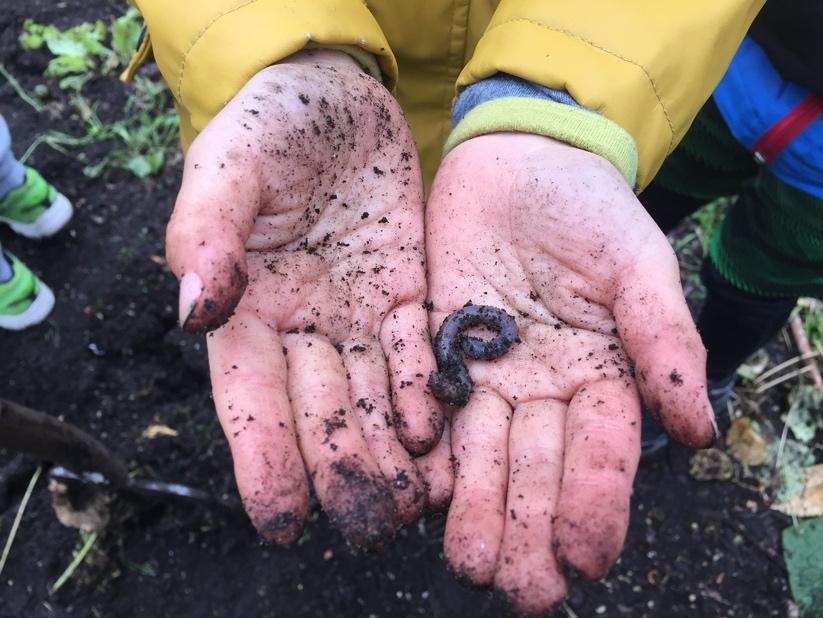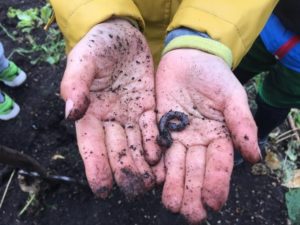This article aims to review a study I conducted during my Master’s degree. The purpose of this study was to explore the perception of elementary-aged students’ social emotional learning in the outdoors, through teacher reflections.
Social Emotional Learning is the process through which all young people and adults acquire and apply knowledge, skills, and attitudes to develop healthy identities, manage emotions and achieve personal and collective goals, feel and show empathy for others, establish and maintain supportive relationships and make responsible and caring decisions.
Collaborative for Academic, Social, and Emotional Learning (2021)
Why are nature-based learning experiences valuable?
This project was inspired by both my personal experiences, and my experiences as a classroom teacher. I took my passion for being outdoors in nature and engaged learners in different nature-based learning experiences such as nature walks, forest exploration, math in nature, and participation in a garden project to explore social emotional learning (see definition above). Through these experiences, I noticed connections between cooperation and self-regulation, in addition to an increase in student engagement when participating in learning in an outdoor environment. The outdoor environment became a way to engage in social emotional learning.
Authentic Learning Experiences 1,3,4
It was clear from my experiences as a classroom teacher and from research (Price, 2018; Harris & Bilton, 2019) that there was a need for social emotional learning to be explicitly taught and practiced daily, in an authentic way. Price (2018) noted that outdoor learning provided opportunities for social emotional learning skills to be fostered in cross-curricular ways, rather than in isolation. I began to question why outdoor learning was not a more substantial part of formal schooling.
It was obvious to me that social emotional learning and outdoor learning made sense to pursue and prioritize, providing students with opportunities to develop and practice life-long skills such as working collaboratively, problem-solving respectfully, regulating emotions, and learning through exploration. By conducting a study that focused on the social emotional learning needs of elementary-aged students, I wished to better my personal teaching practice.
Connecting with Teachers1
Elementary teachers who worked with students aged five to ten, had a minimum of three years teaching experience, and demonstrated innovative teaching and learning practices which incorporated social emotional learning and outdoor learning were invited to partake in my study. Data included interviews, pictures representing purposeful classroom set-up to meet students’ social emotional learning needs, and nature-based lesson examples. By collecting a diverse set of data, participants were able to choose what they felt was meaningful to them and their students, allowing for commonalities to be found across their provided documentation.
Emergent Themes
Three themes emerged from this study:
- The role of the environment in teaching and learning.
- Student-centered approach to teaching and learning.
- The importance of time.
Theme 1: The role of the environment in teaching and learning5
It was evident that collaboration, community, and connecting to local place were significant components in teachers’ practice.
Local place can be defined as:
Spaces outside of the classroom, on school grounds and/or in the community (examples may include forested spaces, ponds, rivers, beaches, playgrounds, fields).
Findings demonstrated students’ connection to local place through their observation of the world around them (e.g. evidence of changing seasons; such as, leaves falling on the ground in autumn) and the use of loose parts (e.g., items found in nature; such as leaves, pine cones, sticks, and rocks) when creating pattern sequences (for nature-based math). As a classroom teacher, I noticed a difference in my students’ personal and social awareness, and responsibility when engaging in nature-based learning experiences. In particular, an increase in students’ ability to self-advocate, to be self-confident, and to self-regulate. Additionally, I noticed students’ greater contribution to the environment and the community. Rose and Cachelin (2014) also discussed the positive relationship students form with place, through their firsthand experiences in local places (p. 10).
Theme 2: Student-centered approach to teaching and learning: 1, 2
It was undeniable that the teachers I interviewed put their students at the forefront of all teaching and learning decisions.
The following commonalties in teacher practice demonstrated the ways in which student needs were driving the teaching and learning pedagogy: 1) supporting students in learning how to identify their emotions and self-regulate; 2) building collaborative community spaces, both in the classroom and in alternative learning spaces, such as the forests; 3) designing hands-on learning experiences that were meaningful to students; 4) using provocations to foster wonder amongst students; 5) allowing learning to be driven by student curiosity; 5) prioritizing student voice and choice through alternative seating opportunities (such as wiggle stools, couches, quiet corners) and self-regulation strategies (such as noise cancelling headphones and use of fidget tools).
Blending classroom learning opportunities with nature-based learning opportunities allowed holistic opportunities to practice and develop social emotional learning skills such as communication, social, and self-management to naturally occur.
Theme 3: The importance of time1, 4
As teachers reflected on their practice, and their perception of students’ social emotional learning, the data showed that time was a fundamental component of teaching and learning. Students, families, teachers, and administrators all required time to adjust to new teaching and learning practices.
While not all teachers in this program were following a specific social emotional learning program, all participants demonstrated that social emotional learning was a crucial part of schooling. Scholars have recognized connections between social emotional learning and nature-based learning, bringing attention to the positive affect the two combined have on academic learning. Price (2018) argued that nature-based learning opportunities enhances social emotional learning skills, therefore positively affecting both educational outcomes and life experiences.
Research has also indicated that a strong foundation of knowledge, skills, resources, and time are key to enacting change. Similarly, in my teaching experience, without time to collaborate, to implement new approaches, to reflect, and to research, it is difficult for change to develop meaningfully.
Conclusions of Themes
The findings provided valuable information into the social emotional learning benefits that transpired from nature-based learning experiences; such as, opportunities to develop a relationship with place, work collaboratively with others, and connect classroom learning to the real world.
Nature-Based Learning Barriers
While interest to explore nature-based learning is high among teachers, barriers continue to prevent teachers from consistently engaging in nature-based learning with their students. Key barriers that came about during conversations with colleagues, separate from this study’s data collection included:
- Weather (Teaching in a cold and/or wet climate).
- A lack of confidence to facilitate nature-based learning, without the direct support of an experienced colleague.
From Research to Practice 1
Ultimately, nature-based learning experiences provided teachers with opportunities to support students’ social emotional learning in meaningful ways. Nature-based learning offered authentic opportunities for teachers to help students practice and implement social emotional learning skills. Students were also able to develop a deep connection with local place. It is my hope that I can foster a love for nature amongst my students, their families, and my colleagues. I aim to create space for teachers to collaborate, while connecting social emotional learning and nature-based learning, while supporting pedagogical growth and confidence learning in, with, and through nature.
About the Author
Social Media/Contact Info
- Twitter: @alexandra__lamb
- Instagram: @nurturinginnature
Qualifications
- B.GS. in Education, Simon Fraser University
- B.Ed. IB PYP, The University of British Columbia
- M.Ed. HOPE, The University of British Columbia
References
1. British Columbia Ministry of Education (B.C. M.o.E.). (2015). Core Competencies. Retrieved from https://curriculum.gov.bc.ca/competencies
2. Coates, J. K., & Pimlott‐Wilson, H. (2019). Learning while playing: Children’s forest school experiences in the UK. British Educational Research Journal, 45(1), 21-40. doi:10.1002/berj.3491
3. Harris, R., & Bilton, H. (2019). Learning about the past: Exploring the opportunities and challenges of using an outdoor learning approach. Cambridge Journal of Education, 49(1), 69-91. doi:10.1080/0305764X.2018.1442416
4. Price, A. (2018). Using outdoor learning to augment social and emotional learning (SEL) skills in young people with social, emotional and behavioural difficulties (SEBD). Journal of Adventure Education and Outdoor Learning. 1-14 doi:10.1080/14729679.2018.1548362
5. Rose, J., & Cachelin, A. (2014). Critical sustainability in outdoor education: Connection to place as a means to social justice and ecological integrity. The Taproot, 23(1).





